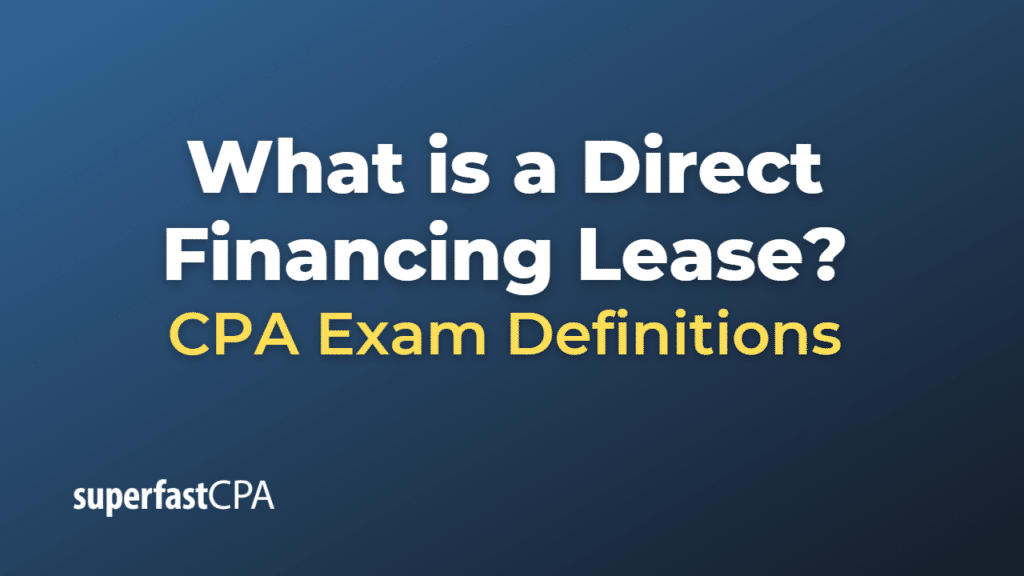Direct Financing Lease
A direct financing lease is a type of lease agreement where the lessor (the entity that owns the asset) purchases an asset for a lessee (the entity using the asset) and leases it to them. This type of lease is typically used for long-term leases of equipment or property.
In a direct financing lease, the lessor does not provide any services related to the leased asset, and the lease is not a sales-type lease. The primary role of the lessor in a direct financing lease is to provide financing for the lessee’s use of the asset.
For accounting purposes, direct financing leases allow the lessor to recognize the present value of lease payments as receivables, while interest revenue is recognized over the lease term. On the lessee’s books, the leased asset and the lease obligation are recorded.
Key requirements for a lease to be classified as a direct financing lease can differ slightly under U.S. GAAP and IFRS standards, but generally include conditions such as:
- Ownership of the asset does not transfer to the lessee at the end of the lease term.
- The lease does not contain an option to purchase the asset at a bargain price.
- The lease term is for the major part of the economic life of the asset.
- The present value of the minimum lease payments amounts to at least substantially all of the fair value of the leased asset.
Remember that lease accounting rules can be quite complex and differ between standards, so it’s always a good idea to consult with a qualified accountant or financial advisor when dealing with these matters.
Example of a Direct Financing Lease
Let’s consider a hypothetical scenario involving a business and a direct financing lease.
Suppose Company A, a manufacturing company, needs a specialized piece of equipment that costs $1 million. However, Company A doesn’t want to pay this entire amount upfront due to cash flow considerations. Company B, a leasing company, steps in and agrees to purchase the equipment from the manufacturer and lease it to Company A.
Under the terms of the lease agreement, Company A will make annual lease payments of $200,000 to Company B for six years, totaling $1.2 million. This arrangement allows Company A to spread out the cost of the equipment over several years, and Company B makes a profit from the interest portion of the lease payments.
In this scenario, Company B isn’t providing any services related to the equipment (like maintenance or insurance), just the financing. Therefore, this lease would be considered a direct financing lease. For accounting purposes, Company B would recognize a lease receivable equal to the present value of the lease payments, and Company A would record a lease obligation and the equipment as an asset on its balance sheet. Over the term of the lease, Company B recognizes interest income, and Company A recognizes interest expense along with depreciation on the asset.
Please note, this is a simplified example, and actual lease accounting can be much more complex. Consultation with a professional accountant or financial advisor is recommended for real-world scenarios.












